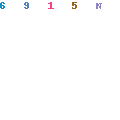You see the short push coming. That little float, almost an invitation. You step around, your feet dancing an intricate 4-beat rhythm you’ve practiced hundreds of 4 times. You load up, coils of energy tightening through your whole body, ready to unleash your signature forehand loop – the one that everyone fears, the shot you’ve spent 4 years perfecting. The paddle connects, a glorious, thudding crunch. The ball rockets over the net. Your opponent, barely moving, just blocks it back. Not fast, not tricky, but to your wide-open backhand corner. Point over. Again.
4 Years of Practice
Dedicated training for the perfect forehand.
The “Perfect” Shot
A powerful forehand loop connects gloriously.
The Counter-Play
Opponent blocks to your weak backhand. Point over.
And there it is. That familiar, cold splash of frustration. You have this weapon, this magnificent forehand that, on paper, should dismantle any opponent. Yet, the pushers, the defenders, the players who seem to move at a quarter of your speed and hit a fraction of your power, they keep beating you. They find your backhand, they find your crossover, they find the empty spaces your aggressive forehand left behind. It’s like owning a military-grade laser cannon but losing a battle because you forgot to bring a simple 4-dollar flashlight.
The Illusion of Brute Force
I’ve been there. More times than I care to admit. For years, my identity as a table tennis player was wrapped up in my forehand loop.































